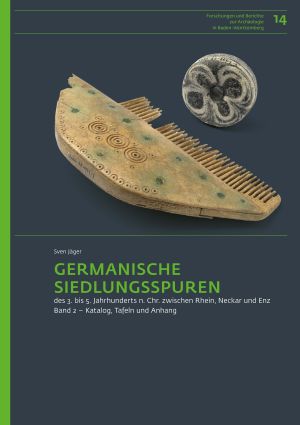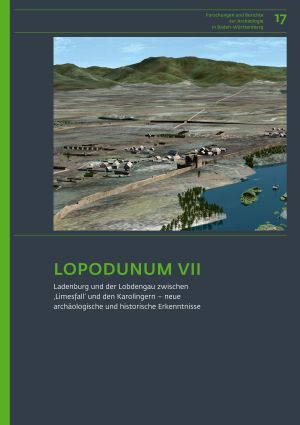Jäger, Sven
Germanische Siedlungsspuren des 3. bis 5. Jahrhunderts n. Chr. zwischen Rhein, Neckar und Enz
The period from the 3rd to the 5th century AD brought a radical change to the area of present-day Baden-Württemberg: the limes of the Roman province of Germania Superior was abandoned as a result of political turmoil and military conflicts, and many inhabitants left the region. Subsequently, a more basic Germanic settlement system was established where Roman villages and rural estates had previously existed. Recent excavations provide information about the development of individual sites during this period and the changes in the settlement landscape. Why did some places have a Germanic successor settlement and others not? Were romanised germanic people who already lived in the Roman provinces a nucleus of the occupation of the 3rd to 5th centuries? These and other questions are addressed in the study at hand on the basis of 32 sites from a study area extending form the Rhine plain over the Kraichgau to the middle Neckar region and from the southern foothills of the Odenwald to the Enz valley.
Germanische Siedlungsspuren des 3. bis 5. Jahrhunderts n. Chr. zwischen Rhein, Neckar und Enz
The period from the 3rd to the 5th century AD brought a radical change to the area of present-day Baden-Württemberg: the limes of the Roman province of Germania Superior was abandoned as a result of political turmoil and military conflicts, and many inhabitants left the region. Subsequently, a more basic Germanic settlement system was established where Roman villages and rural estates had previously existed. Recent excavations provide information about the
LOPODVNVM VII: Ladenburg und der Lobdengau zwischen ‚Limesfall‘ und den Karolingern
The town of Ladenburg looks back on a rich historical heritage: In the Roman era, Lopodunum was the capital of an extensive municipality, the civitas Ulpia Sueborum Nicrensium, and from the Carolingian period onward, Lobedtenburc is documented as the center of the Lobdengau. For the period in between, written sources are largely missing; all the more important are archaeological features and finds. The most important of these are presented in the volume at hand and embedded in the historical context. For instance, a group of Postumus coins from Ladenburg are presented, new interpretations of the late Roman burgus and the medieval ‘bishop's court’ are discussed, and recent findings on a Carolingian cemetery in the city area are presented. The surroundings of Ladenburg are represented by overviews on the richly equipped early medieval cemeteries of the region and on recent settlement excavations. Critical re-evaluations of written sources as well as historical-archaeological syntheses on the various possible scenarios of the 'Fall of the Limes' and on comparative regions such as the Palatinate in Late Antiquity complete the volume.









